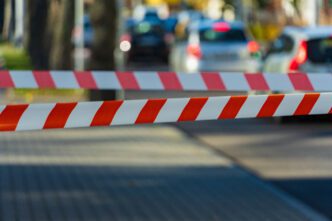A coalition of 70 environmental organizations staged a protest at the headquarters of Florida’s Department of Environmental Protection (DEP) against the state’s decision to allow exploratory oil drilling along the Apalachicola River.
In May, the Florida Department of Environmental Protection announced a controversial decision to permit an exploratory oil well near the Apalachicola River. This move immediately provoked strong reactions, with the Apalachicola Riverkeeper spearheading a protest and legal challenges against the decision. The “Kill the Drill” protest highlighted the objections of environmental groups, including the Florida Wildlife Federation, Sierra Club, and Wakulla Springs Alliance, which demand intervention from Governor Ron DeSantis to halt Clearwater Land & Minerals’ drilling plans. The proposed drilling site is approximately 60 miles west of Tallahassee in Calhoun County.
The decision from the DEP has faced bipartisan opposition from local lawmakers and community members. As legal challenges unfold in Tallahassee, opponents continue to express their concerns. The DEP maintains that the project complies with state laws designed to protect natural resources. However, more than twelve speakers have questioned the project’s wisdom at both court hearings and public demonstrations, emphasizing the unique ecological status of the Apalachicola River, designated by UNESCO as a vital and largely untouched biosphere region.
The significance of the Apalachicola River cannot be overstated. It supports a rich ecosystem that includes rare species such as the Torreya tree and a wide array of amphibians and reptiles. Notably, the river valley is home to over 1,300 plant species and harbors more fish species than any other river in Florida, according to EarthJustice. This unique environment directly supports local economies through seafood and tourism industries, providing livelihoods for oyster farmers, fishermen, and others.
During the protest at the DEP headquarters, more than 500 demonstrators, including students from Cornerstone Learning Community, voiced their opposition with signs reading “Stop the Drill” and “Our Right – Clean Water.” This united local effort underlines widespread concerns about potential environmental impacts reminiscent of past disasters like the 2010 BP oil spill, which severely affected the area’s oyster fishery and ecosystem.
Prominent voices in the protest included Xochitl Bervera, representing the working community of the Big Bend coast, emphasizing the area’s dependency on clean water for daily employment and the regional economy. “At a moment in time when there is a lot of disagreement in the world, there is unanimous agreement among the people of Apalachicola Bay that to drill a few miles up the river from our precious Bay is absolute insanity,” Bervera stated, capturing the urgency and passion of the local community.
The legal proceedings are ongoing, with Administrative Law Judge Lawrence P. Stevenson presiding over the case. Clearwater Land & Minerals attorney Timothy Riley defended the drilling proposal by citing its previous approval in 2019, highlighting its unchanged site and environmental safety measures. Nevertheless, the Apalachicola Riverkeeper’s legal team, led by Tim Terry, argues that the project’s potential risks to endangered species and the fragile ecosystem have not been adequately addressed.
This debate over environmental stewardship versus energy development echoes broader national and global discussions on sustainable practices. The decision now rests in the hands of the judiciary, which must weigh the ecological value of the Apalachicola region against the perceived benefits of energy exploration.
The conflict over oil drilling near the Apalachicola River highlights a critical juncture in environmental conservation efforts. With a rich biodiversity at stake, the outcome of this dispute will significantly impact local ecosystems and economies.
Source: News-journalonline








